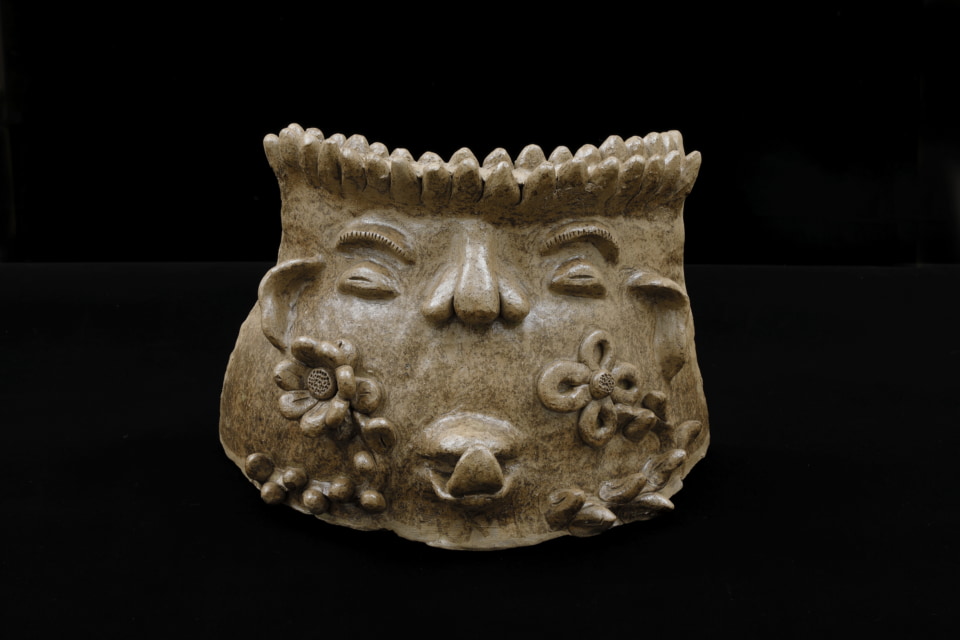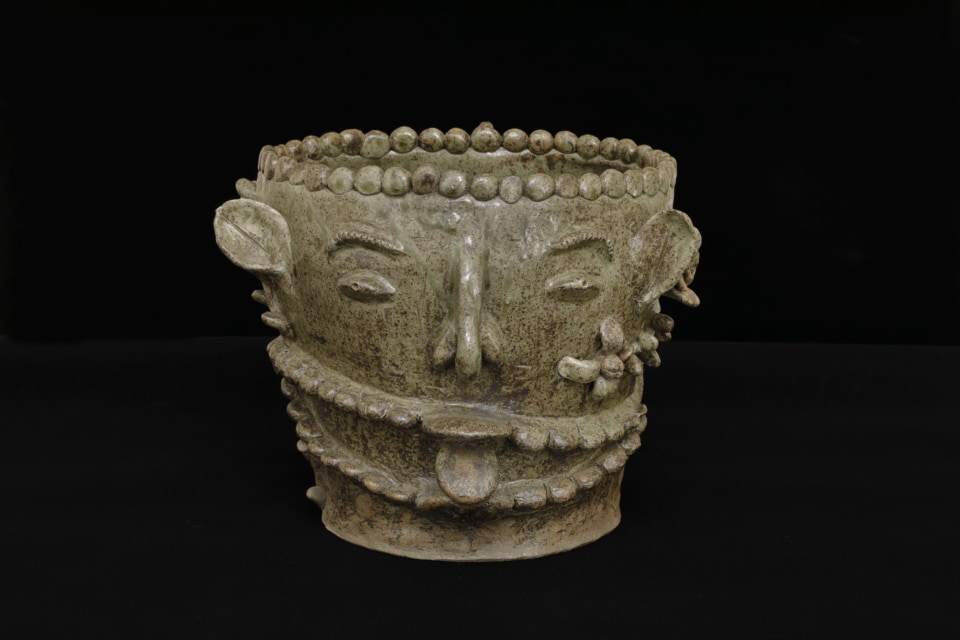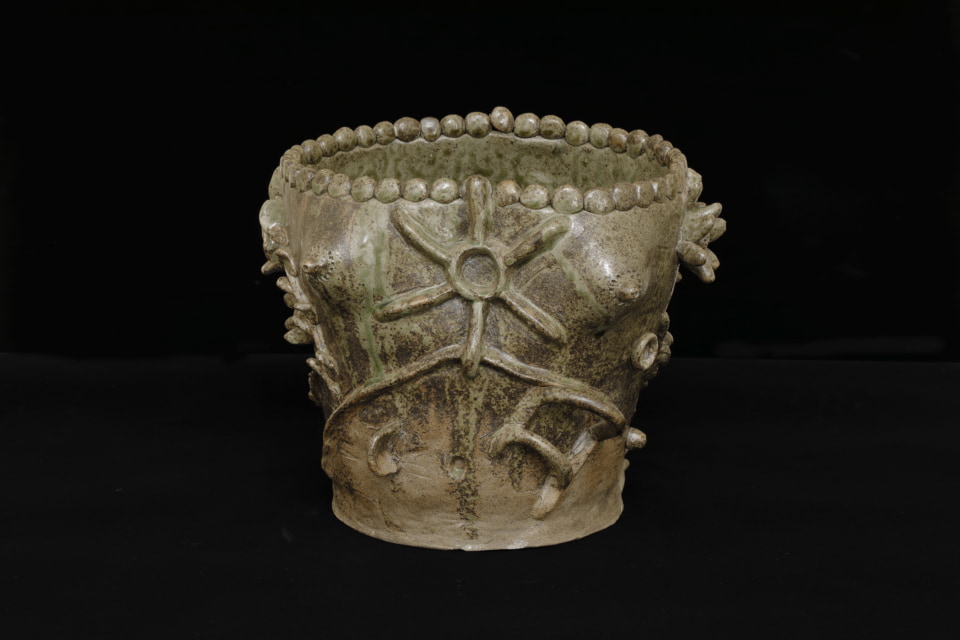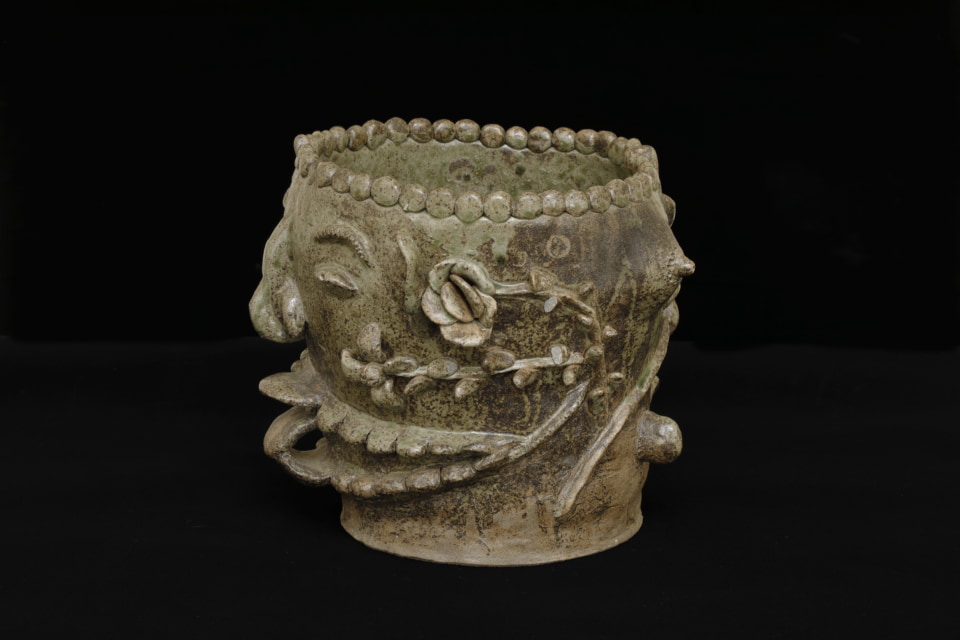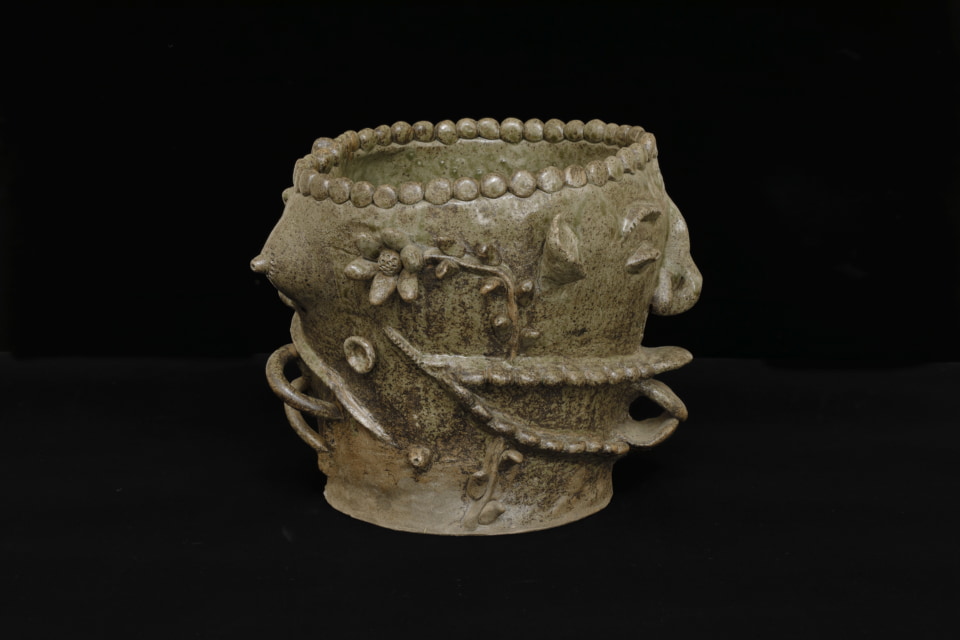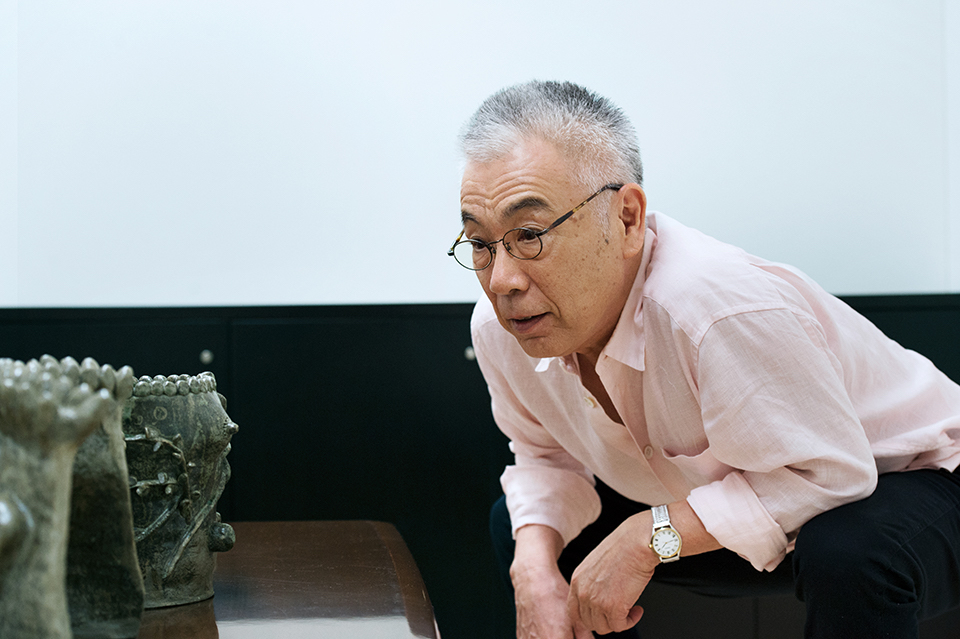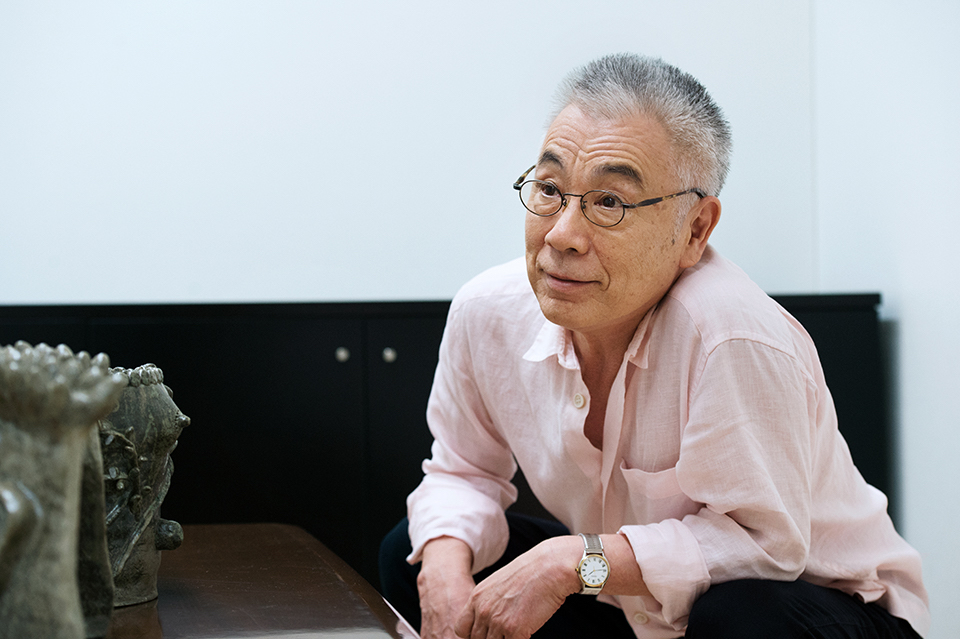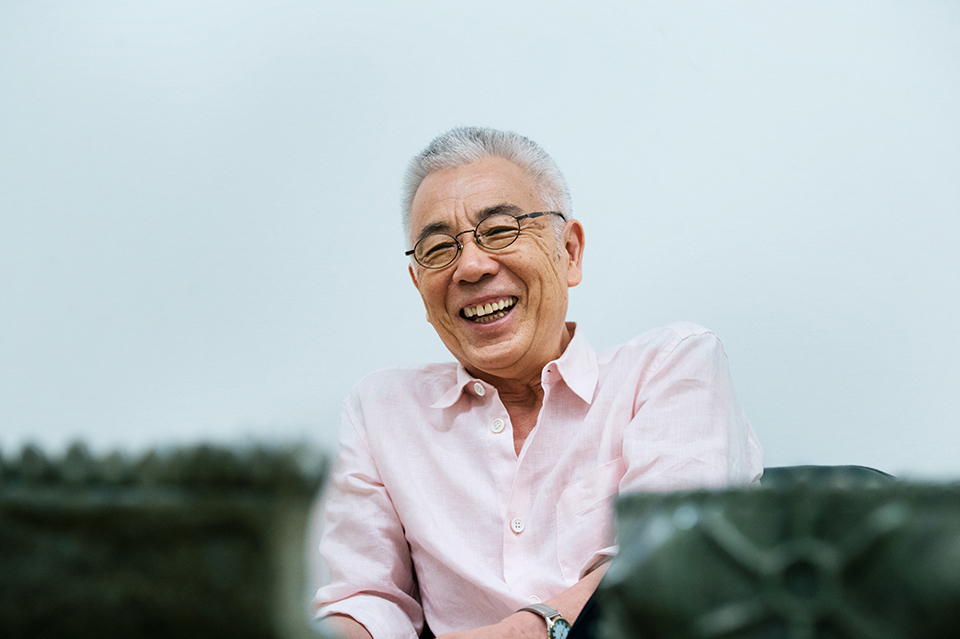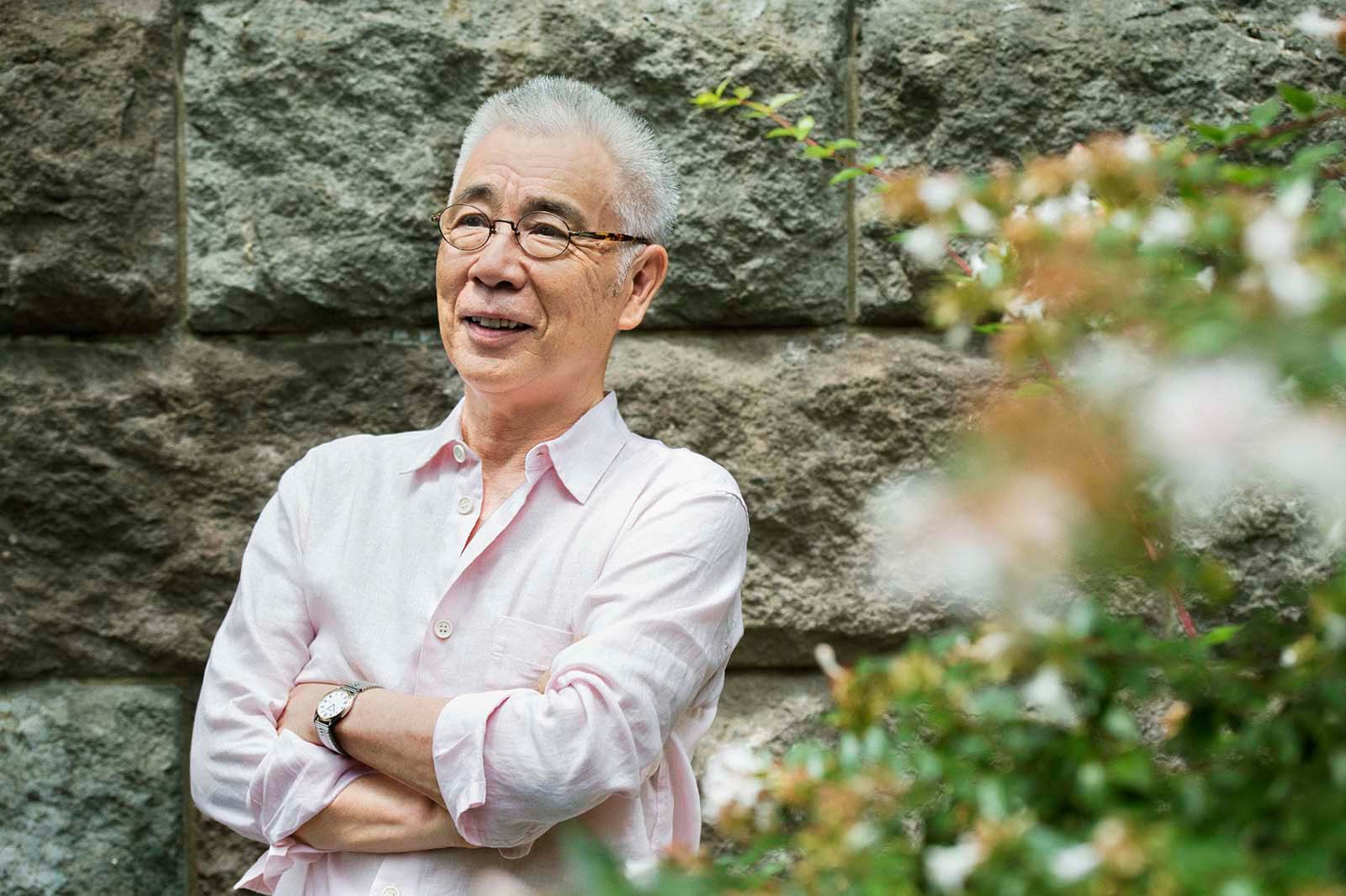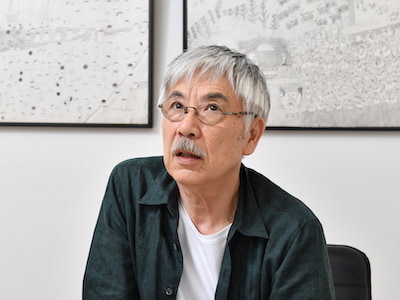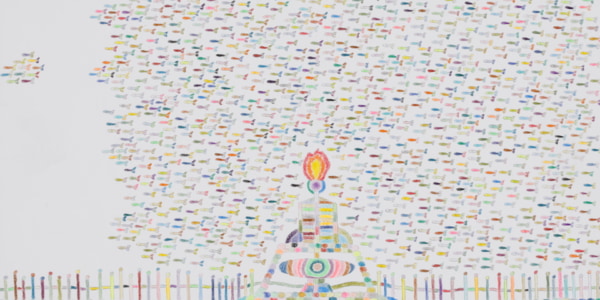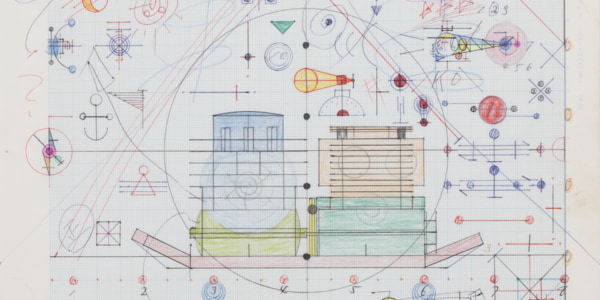The first thing that sprang to mind as soon as I saw these works was Gauguin. He went to Tahiti burning with ambition to paint pictures that no ordinary artist could produce, yet he found it impossible to sell his paintings when he returned to France. Nevertheless, he refused to give up, and went back to Tahiti again. The first time he went, he could only go to places that had been dressed up for tourists, and he was disappointed not to see the Tahiti he had imagined. So, the second time, he goes further into the heart of the island. He rents a house in the forest by himself.
One morning some days later, a statue appears on a tree stump in front of the house. Faced with this statue, clearly crafted by a Tahitian, Gauguin takes it as a message about his own art. “At the end of the day, aren’t the things you make just arbitrarily conforming to the French style?” “Well? Could youmake something like this?”
So then Gauguin begins to work on his own statue of a Tahitian, similar to this one. But he can see for himself that, no matter what he does, he won’t reach the level of the statue left in front of the house.
That’s when another statue appears. Something with a different atmosphere. This statue seems in a way more complex; its expression seems a little softer than the previous one, and a feminine face can be seen.
These two statues haunt Gauguin. Who left them in front of the house, and with what motive? Of course, the person who made them will never show themselves to him. Plagued with his thoughts, he throws himself into creation, only to catch malaria and find himself unable to leave his bed.
As he groans feverishly in a bed in the local hospital, someone soothes his brow with a cold compress. “Oh, that feels good…” When he opens his eyes in a daze, the person is gone in a flash. Whenever he drops back into a doze, it seems that there’s someone there, but, sure enough, they disappear as soon as he regains consciousness. All he manages to catch a glimpse of through the doorway is the soles of their feet as they flee.
And then, after several days laid up in bed, a voice comes to him, real or in a dream, saying, “the first statue is you: a statue of Gauguin the outsider. And the second is a statue of me, the one who is caring for you.”
However, if Gauguin had hoped that the girl who had tended to him would reappear once he had recovered, he was disappointed. Nothing remained but the statues.
Gauguin, back in the house in the forest, went on painting Tahiti as he thought of it, based on his impressions of the two statues. In this period of focused creation, he produced many paintings of Tahitians filled with that impression of ambivalence, that they were rejecting him even as they accepted him.
The young woman who had created the statues had nursed Gauguin and watched over him in various ways, but she never introduced herself or let him know that she was looking after him. To Gauguin, this was both acceptance and rejection. He reacted with annoyance—why wouldn’t she come any closer?
But from the point of view of the Tahitians, they didn’t have any particular thoughts of either rejection or acceptance. Theirs was simply one way of making contact with someone who came from somewhere else; nothing more. To the Tahitians, the first statue is Gauguin. An unknown quantity, with his tongue sticking out. And then the second is the young woman who created the statues. She’s always watching over Gauguin, and created the statues through a desire to be seen, but wants nothing more.
The young woman had simply created according to what she saw, but Gauguin took this for ambivalence and labelled it “a relationship of welcoming rejection.” By painting the ambivalence in this, he produced many paintings that manifested as the essence of Tahiti.
Around this time, Gauguin’s unpleasant thoughts about trying to sell the statues fell away. This is a story of fine art, which became the catalyst for Gauguin painting Tahiti as he felt it.
Incidentally, I borrowed the title of “The Moon and Ambivalence” from Somerset Maugham’s “The Moon and Sixpence,” a novel based on Gauguin’s life.
There are so many sources of art: artists, Sunday painters, and of course people with disabilities, everyone creating what we call works of art. But when I’m engaging in my wild imagining, I disregard the question of the creator of the piece and look exclusively at the work itself. In this way, I come up with various stories, and new works that differ from these works are born. I think that being inspired to create something new through contact with a work of art is a healthy way for artwork to grow.
My ideal would be for someone to listen to my wild imaginings and turn them into a short animation, or a movie, or make a picture book, or finger puppets. It’s not a question of “whose is the original?” Each work becomes an original. Works of art successively bringing one another into being like this is the ideal, I’d say.
I think this is the case for novels, for movies, for interesting art. It’s also moving when you can see the hands that crafted them.
This is the case with these statues. You can feel the touch of the creator’s hands. In this way, connection with a flesh and blood person may be an element in the sparking of a story.
